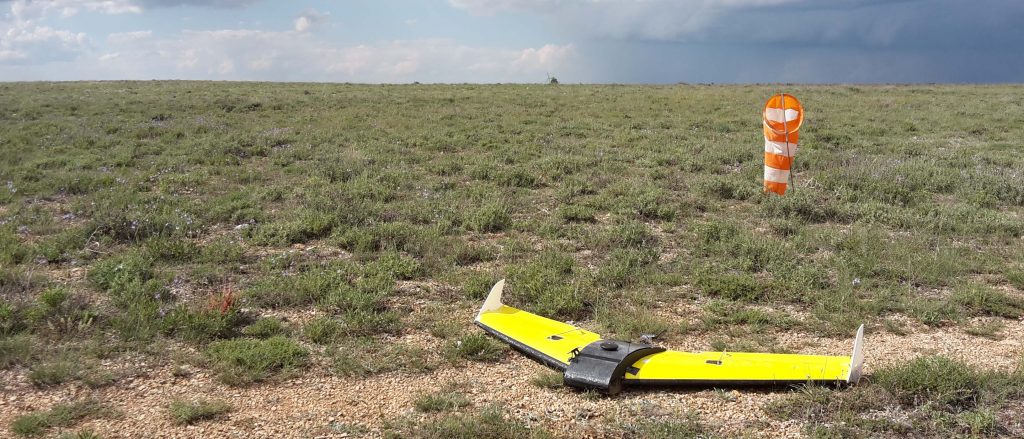BBVA-Ricotí. 2016-2019
- Dupont’s lark (Chersophilus duponti) is one of the most critically endangered birds in Spain and Europe. The only European populations are in continental Spain, where numbers are estimated at 1,300 – 2,800 pairs, with a clearly declining trend in recent years. It is listed as an endangered species in the Spanish Red Book of Birds and Annex I of the Birds Directive, and is a priority species for the Ornis Committee. Dupont’s lark is regarded as an umbrella species for the conservation of these unique ecosystems, particularly in Europe, given that it is a specialist inhabitant of natural steppes with prostrate shrub vegetation.
Specific objectives:
- Study of habitat quality (food availability and vegetation structure) in contrasting lark densities and livestock presence/absence, and raise awareness of grazing as a habitat management tool.
- Large-scale estimates of Dupont’s lark habitat quality using remote sensing, remote-control aerial systems (drones) for efficient, long-term habitat monitoring (essential for monitoring populations and the effectiveness of habitat management measures).
- Involvement of the local human population in conservation strategies by means of public participation processes, previously identifying key actors, conflicts and alliances, and later generating species-oriented management scenarios (using grazing as an instrument).
 The achievement of these objectives will generate scientific conclusions, measures applied to the Dupont’s lark population monitoring and management process, more local involvement in the species’ conservation. It is also expected to contribute to the socio-economic development of the rural communities. The commitment by several public administrations to include these conclusions in the management plans for the species and its habitats is an indication of the importance of these results. This project has the direct support of several administrations including the Spanish Ministry of Agriculture, Food and the Castilla y León Regional Government’s Environment Department.
The achievement of these objectives will generate scientific conclusions, measures applied to the Dupont’s lark population monitoring and management process, more local involvement in the species’ conservation. It is also expected to contribute to the socio-economic development of the rural communities. The commitment by several public administrations to include these conclusions in the management plans for the species and its habitats is an indication of the importance of these results. This project has the direct support of several administrations including the Spanish Ministry of Agriculture, Food and the Castilla y León Regional Government’s Environment Department.

